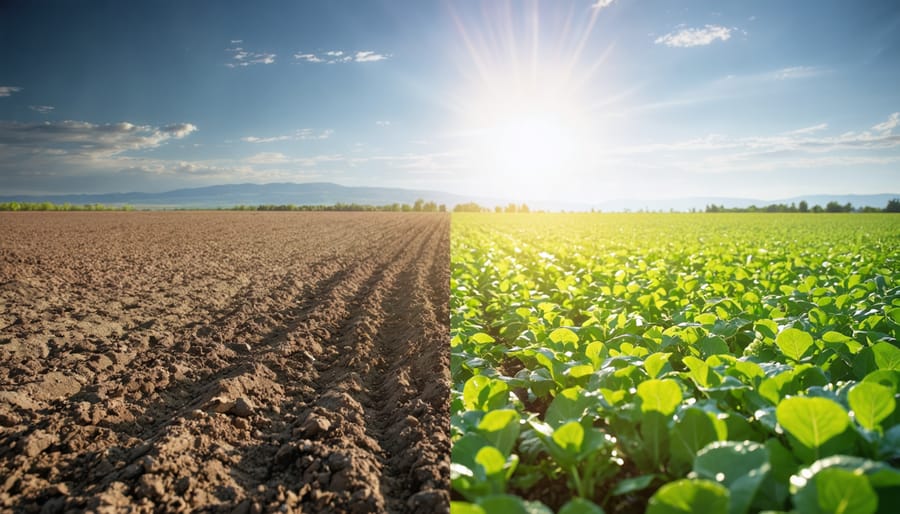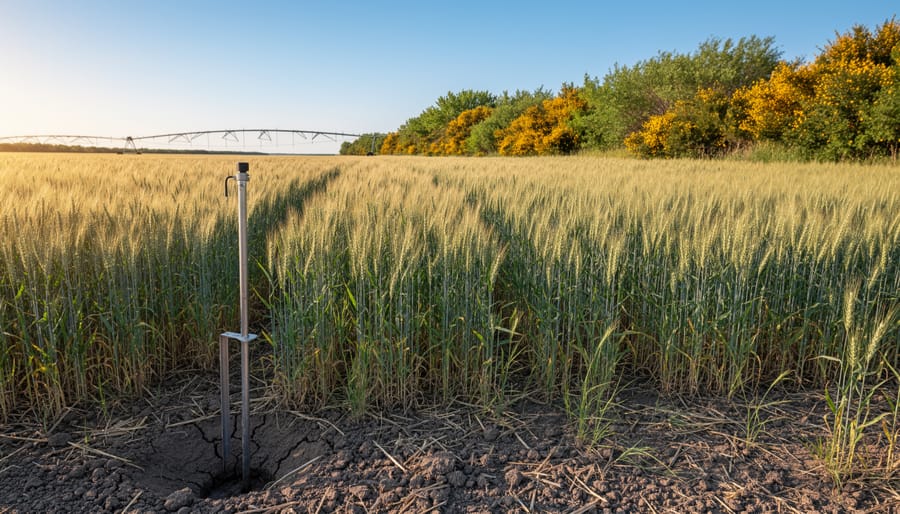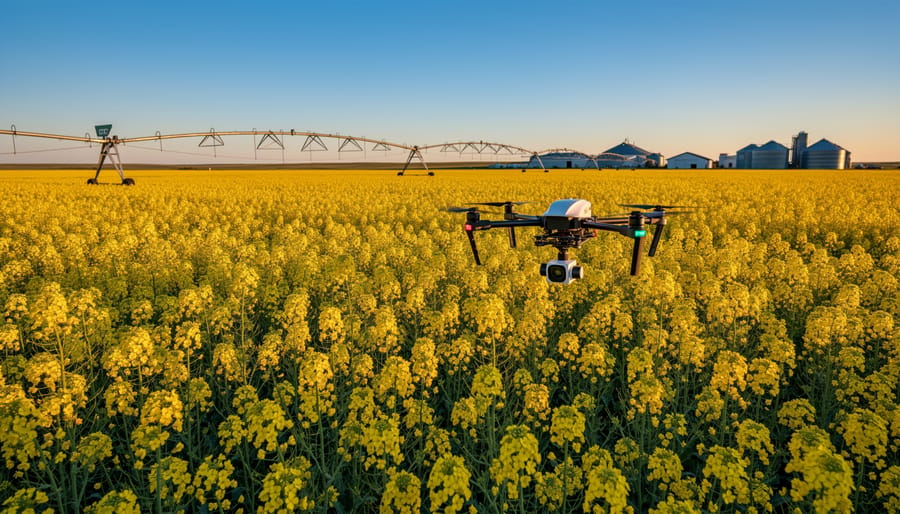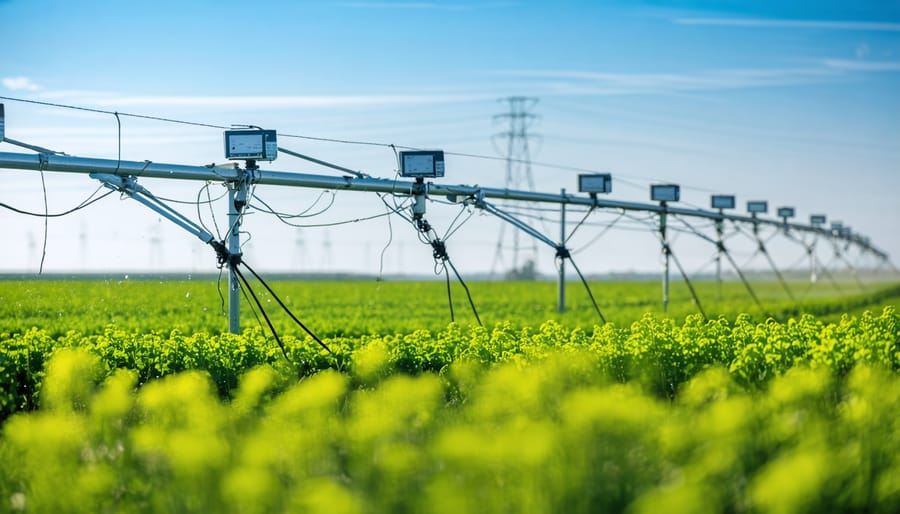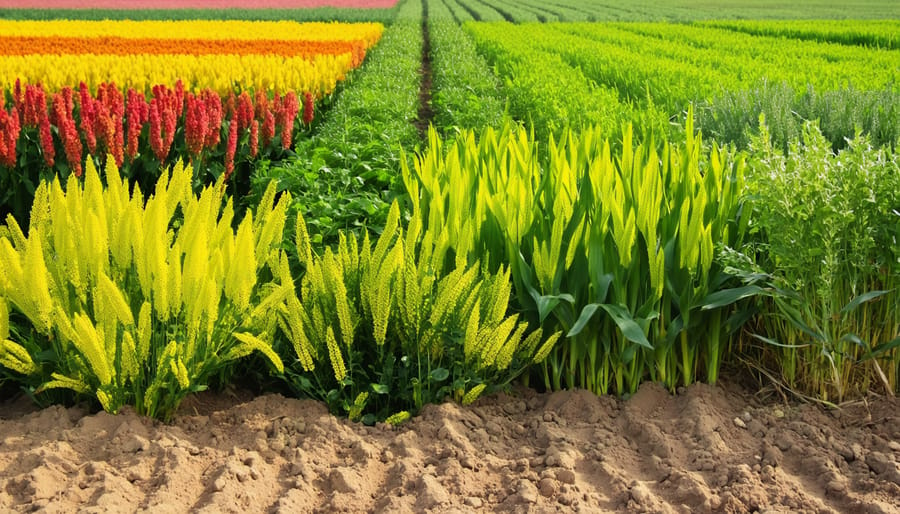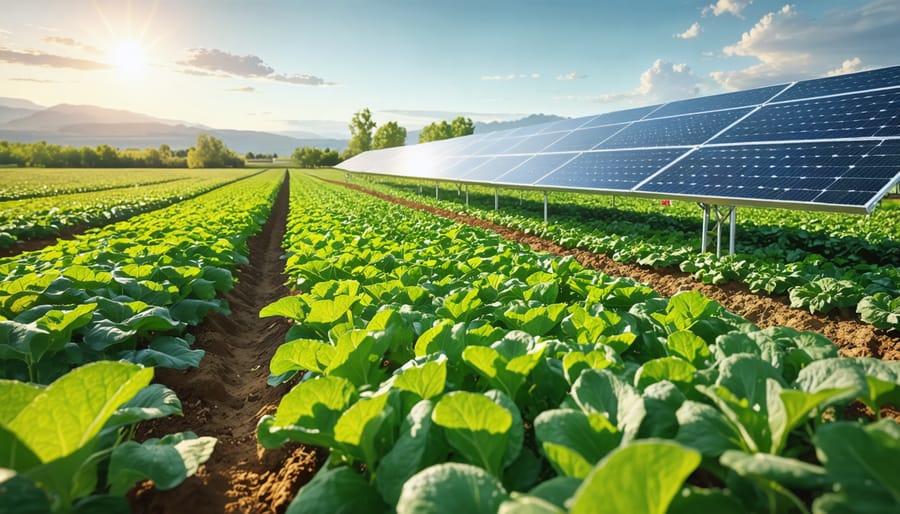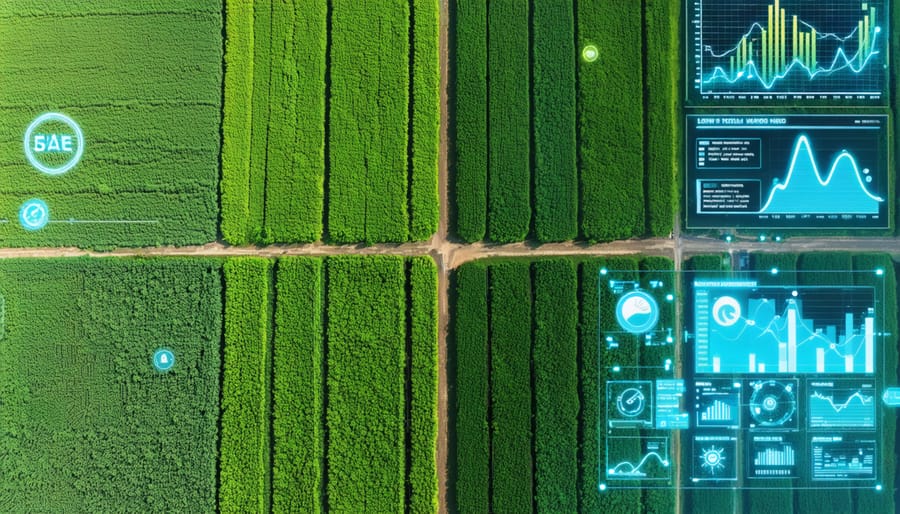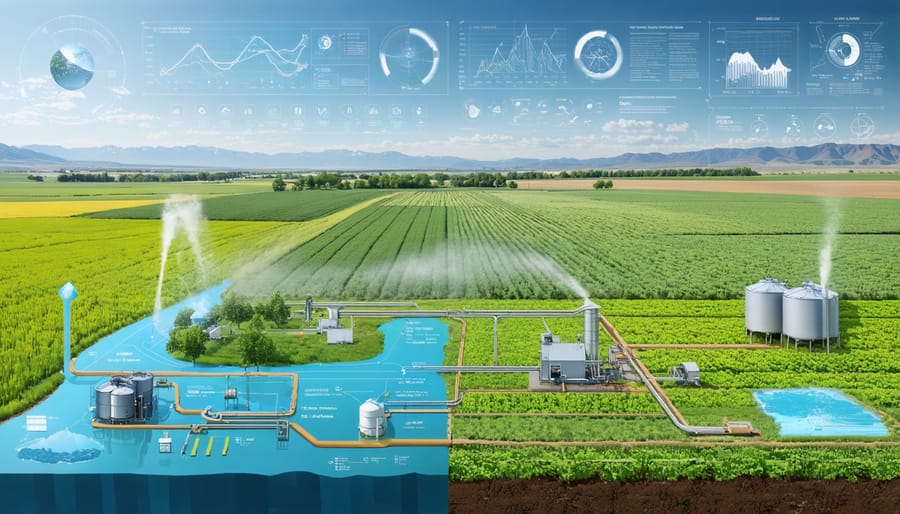Biodegradable mulching film revolutionizes Alberta’s farming landscape by cutting water usage up to 30% while naturally decomposing into the soil after harvest. Made from plant-based polymers like polylactic acid (PLA) and thermoplastic starch, these films offer Prairie farmers a sustainable alternative to conventional plastic mulch without the environmental burden or removal costs. Recent field trials across Southern Alberta demonstrate successful implementation in canola and vegetable crops, with degradation rates perfectly timed to local growing seasons and soil conditions.
For Alberta producers facing increasing water management challenges and rising labor costs, biodegradable mulch films present a game-changing solution. These films maintain soil temperature, suppress weed growth, and conserve moisture throughout the growing season – all while breaking down into non-toxic compounds that actually benefit soil health. With current government incentives supporting sustainable farming practices, the transition to biodegradable mulch films offers both environmental and economic advantages for forward-thinking Canadian farmers.
This innovative technology aligns perfectly with Alberta’s push toward sustainable agriculture, delivering immediate operational benefits while contributing to long-term soil health and environmental stewardship.
What Makes Biodegradable Mulch Films Different?
Materials and Composition
Biodegradable mulching films are primarily composed of naturally derived polymers that break down into non-toxic components. The most common materials include polylactic acid (PLA), derived from corn starch or sugar cane, and thermoplastic starch (TPS) from potato or wheat sources. These materials are particularly effective for soil erosion prevention through mulching while maintaining soil health.
Many Alberta farmers have found success with films containing a blend of PLA and TPS, which typically decompose within 6-12 months after planting. These films also include natural additives like vegetable oils and waxes that enhance flexibility and durability during the growing season.
Canadian-approved biodegradable mulch films must meet strict standards, breaking down into carbon dioxide, water, and organic matter without leaving harmful residues. The thickness usually ranges from 15 to 25 microns, providing optimal soil coverage while ensuring complete biodegradation.
Recent innovations have introduced films enriched with beneficial soil microorganisms that accelerate decomposition and improve soil structure. These enhanced formulations are particularly suited to Alberta’s climate, offering extended functionality during our shorter growing seasons.
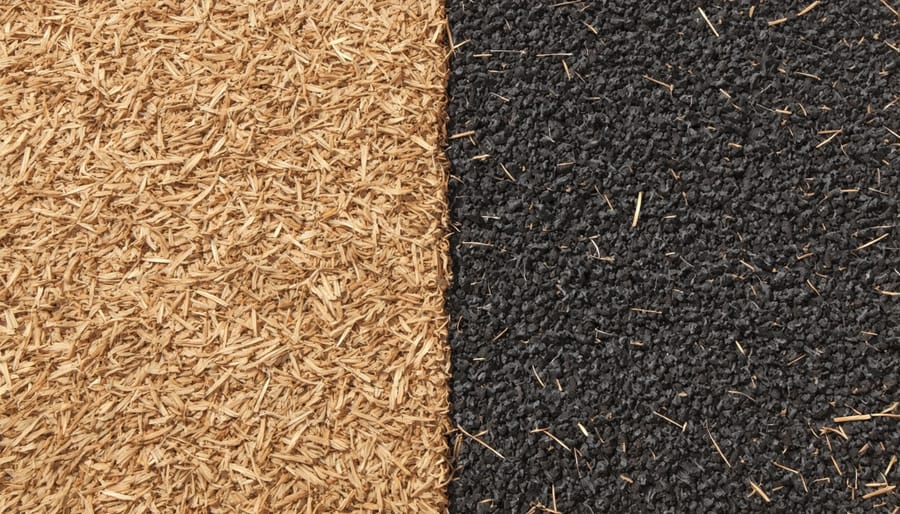
Breakdown Process in Alberta Soils
In Alberta’s unique climate, biodegradable mulch films break down through a combination of environmental factors and soil microorganism activity. Our province’s distinct seasonal temperature variations, from hot summers to cold winters, play a crucial role in the decomposition process. During the growing season, when soil temperatures reach 15-25°C, beneficial bacteria and fungi actively break down the film’s polymer chains into smaller compounds.
The decomposition rate varies depending on local soil conditions, with organic matter content and moisture levels being key factors. In typical Alberta agricultural soils, these films generally decompose within 12-24 months after tilling into the soil. Clay-rich soils common in central Alberta may see slightly slower breakdown rates compared to loamy soils in southern regions.
Farmers have reported successful decomposition particularly when films are incorporated into the soil after harvest in late fall. This timing allows winter precipitation and freeze-thaw cycles to initiate the breakdown process, while spring cultivation helps distribute the remaining fragments for final decomposition. Recent field trials in Lethbridge demonstrated complete film degradation within 18 months when proper soil temperature and moisture conditions were maintained.
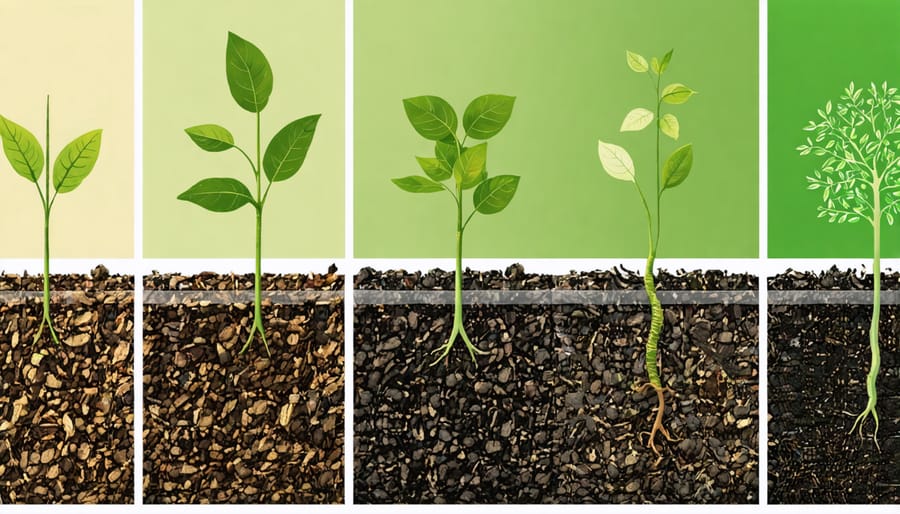
Water Retention Benefits for Prairie Farms
Moisture Management Success Stories
Several Alberta farmers have witnessed remarkable success with biodegradable mulching films in managing soil moisture. Tom Anderson, who operates a 500-hectare vegetable farm near Lethbridge, reported a 40% reduction in irrigation needs after switching to biodegradable mulch in 2021. “The film maintained consistent soil moisture throughout our dry spells, and our pepper yields increased by 25% compared to previous seasons,” Anderson shares.
In the Red Deer region, Sarah Mitchell’s family farm experienced similar benefits during last year’s growing season. Their 20-hectare strawberry operation saw a 30% decrease in water usage while maintaining optimal soil moisture levels. “What impressed us most was how the mulch performed during those intense summer heat waves,” Mitchell notes. “Our berries stayed healthy despite the challenging conditions.”
The MacKenzie Farm in Olds presents another compelling case. After implementing biodegradable mulch across their cucumber fields, they documented a 35% reduction in water consumption and noticed significantly fewer moisture-related crop issues. Owner James MacKenzie emphasizes the film’s effectiveness in preventing soil moisture evaporation during chinook winds, a common challenge in southern Alberta.
These success stories demonstrate how biodegradable mulching films can effectively manage soil moisture while supporting sustainable farming practices in Alberta’s diverse growing conditions.
Drought Resistance Improvements
Field studies across Alberta have shown that biodegradable mulching films can significantly improve drought resistance, making them an invaluable tool among various water conservation strategies for Canadian farmers. Recent data from the Lethbridge Research Station indicates that farms using these films typically reduce irrigation needs by 25-30% compared to unmulched fields.
The films work by creating a barrier that reduces soil water evaporation while maintaining optimal soil moisture levels. During Alberta’s hot summer months, this translates to water savings of approximately 2-3 millimetres per day. For a 40-hectare field, this can mean conserving up to 900,000 litres of water over a growing season.
Local farmer Sarah Thompson from Red Deer County shares, “Since implementing biodegradable mulch films three seasons ago, we’ve cut our irrigation cycles by nearly a third while maintaining healthy crop yields. The soil stays consistently moist, even during those challenging dry spells we often face in July.”
The films are particularly effective when combined with drip irrigation systems, creating a synergistic effect that maximizes water use efficiency. Research from the University of Alberta demonstrates that this combination can achieve water savings of up to 40% compared to conventional irrigation methods, while also promoting deeper root growth and improved plant resilience during drought conditions.
Implementation Guide for Alberta Farmers
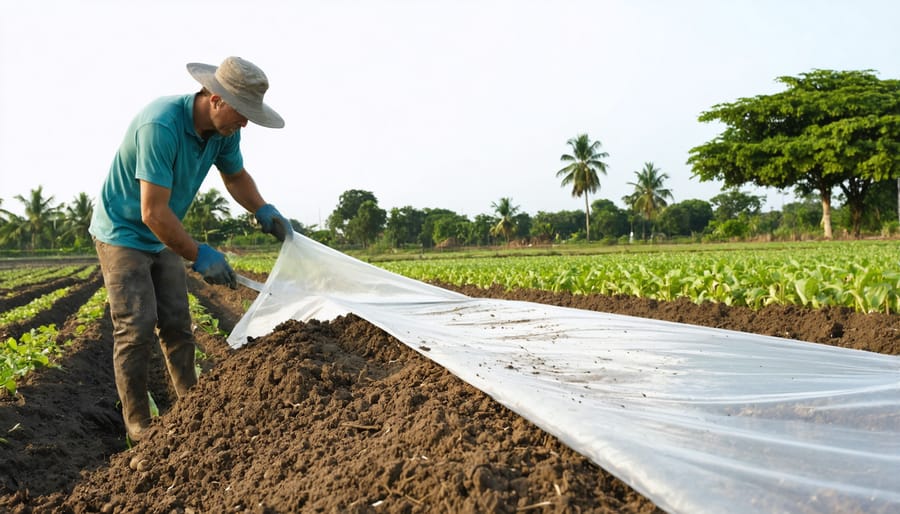
Application Techniques
Installing biodegradable mulching film requires careful attention to detail for optimal results. Here’s how to properly lay your film for the best outcome in Alberta’s unique climate conditions:
Start by preparing your soil thoroughly. Remove any rocks or debris and ensure the soil is well-tilled to a depth of 15-20 cm. Level the ground and create a slight crown in the centre of your rows to prevent water pooling. The soil temperature should be at least 12°C for best results.
Position your mulch laying equipment or manual roll-out system at the beginning of your row. If you’re using machinery, ensure it’s properly calibrated for your field’s specifications. For smaller operations, manual installation with a team of two people works well.
Begin laying the film with about 1 metre of extra material at the start. Secure this end firmly using soil or landscape staples. As you move forward, maintain consistent tension on the film – it should be snug but not stretched too tight, as the material needs some give for proper soil contact.
Bury the edges approximately 10-15 cm deep on both sides. This anchoring is crucial for Alberta’s windy conditions. For best results, install during calm weather and early morning hours when wind speeds are typically lower.
After installation, check for proper soil contact across the entire surface. Small air pockets can be problematic, so gently press down any lifted areas. If you’re using drip irrigation, install it either before or during the mulch laying process, depending on your system setup.
Remember to document your installation date – this helps track the film’s degradation timeline and plan for future seasons. Most biodegradable films in our climate last one full growing season.
Maintenance Requirements
Regular monitoring and proper maintenance of biodegradable mulching film is crucial for optimal performance throughout the growing season. Start by checking the film’s condition weekly, particularly after extreme weather events like heavy rainfall or strong winds. Look for any tears or premature breakdown that might affect its effectiveness.
Ensure proper soil contact is maintained by gently pressing down any lifted edges or corners. This prevents wind from getting underneath and potentially damaging the film. While performing these checks, be mindful of common mulching mistakes to avoid, such as accidentally creating air pockets or damaging the film during maintenance.
Monitor soil moisture levels regularly using a moisture meter or through visual inspection beneath the film. Adjust irrigation schedules based on these observations, keeping in mind that biodegradable mulch typically reduces water requirements by 20-30% compared to bare soil cultivation.
Document the film’s degradation progress throughout the season. This helps in planning future applications and understanding how local conditions affect breakdown rates. For Alberta’s climate, expect visible signs of degradation to begin 6-8 weeks after installation, though this varies by product and weather conditions.
Keep records of temperature fluctuations and rainfall, as these factors influence degradation rates. If you notice unusual or accelerated breakdown, consult with your supplier or local agricultural extension office for guidance. Remember that some degradation is normal and actually beneficial for end-of-season soil incorporation.
By maintaining consistent monitoring practices, you’ll maximize the benefits of your biodegradable mulch while ensuring it performs effectively throughout your growing season.
Cost-Benefit Analysis for Prairie Farms
Initial Investment vs. Long-term Savings
While biodegradable mulching film requires a higher upfront investment compared to conventional plastic mulch, the long-term financial benefits often outweigh the initial costs. Current market prices in Alberta show biodegradable mulch running about $375-425 per hectare, roughly 25-30% more than traditional plastic mulch.
However, the cost analysis shifts significantly when considering end-of-season expenses. Traditional plastic mulch requires removal and disposal, costing approximately $200-250 per hectare in labour and disposal fees. Biodegradable options eliminate these costs entirely, as the film naturally decomposes into the soil.
Many Alberta farmers implementing water-smart farming practices report additional savings through reduced irrigation needs. The superior moisture retention properties of biodegradable mulch can cut water usage by 25-30%, translating to significant utility cost savings over the growing season.
Local farmer Sarah Thompson from Lethbridge shares, “After three seasons using biodegradable mulch, we’ve seen our overall operational costs decrease by about 15%. The initial investment was higher, but the elimination of removal costs and water savings made it worthwhile for our operation.”
Consider also the environmental cost savings and potential carbon credits available through agricultural sustainability programs, which can further offset the initial investment.
Available Grants and Incentives
Alberta farmers looking to adopt biodegradable mulching film can access several financial support programs. The Canadian Agricultural Partnership (CAP) offers grants covering up to 50% of eligible costs through their Environmental Stewardship and Climate Change Producer Program, with maximum funding of $70,000 per project.
The Agricultural Financial Services Corporation (AFSC) provides low-interest loans specifically for environmental improvements, including sustainable farming practices. These loans can help offset the initial investment in biodegradable mulching materials and installation equipment.
Through Alberta’s Environmental Farm Plan (EFP), producers can qualify for additional funding when implementing sustainable practices. Completing an EFP assessment is often a prerequisite for accessing these grants and can open doors to other funding streams.
For organic producers, the Organic Science Cluster program offers specific grants for transitioning to biodegradable alternatives. Local agricultural societies and watershed groups sometimes provide smaller grants ranging from $2,000 to $5,000 for innovative farming practices.
Remember that grant availability and amounts change seasonally. Contact your local Agricultural Service Board representative or visit the Alberta Agriculture and Forestry website for the most current funding opportunities. Many of these programs require pre-approval and have specific application windows, so planning ahead is essential.
As we’ve explored throughout this article, biodegradable mulching film offers Alberta farmers a sustainable solution for improving crop yields while protecting our environment. The benefits of water conservation, weed suppression, and soil temperature regulation make it a valuable tool for modern agricultural practices in our region.
The transition to biodegradable mulch films requires careful planning but presents a worthwhile investment for your farm’s future. By starting with small trial areas and gradually expanding implementation, you can develop expertise while managing costs effectively. Many of your fellow Alberta farmers have already successfully integrated these materials into their operations, proving their viability in our unique climate conditions.
Remember to work closely with local agricultural extension services and suppliers who understand our specific growing conditions. They can provide valuable guidance on product selection and installation techniques that work best for your particular situation. Consider joining local farmer networks or cooperative groups to share experiences and learn from others who are using biodegradable mulch films.
Looking ahead, the technology behind these materials continues to improve, with new products being developed specifically for Canadian growing conditions. By staying informed about the latest developments and maintaining open dialogue with other farmers and agricultural professionals, you’ll be well-positioned to maximize the benefits of this sustainable farming practice.
Take the first step today by reaching out to your local agricultural advisor to discuss how biodegradable mulching film can fit into your farm’s sustainability strategy.

